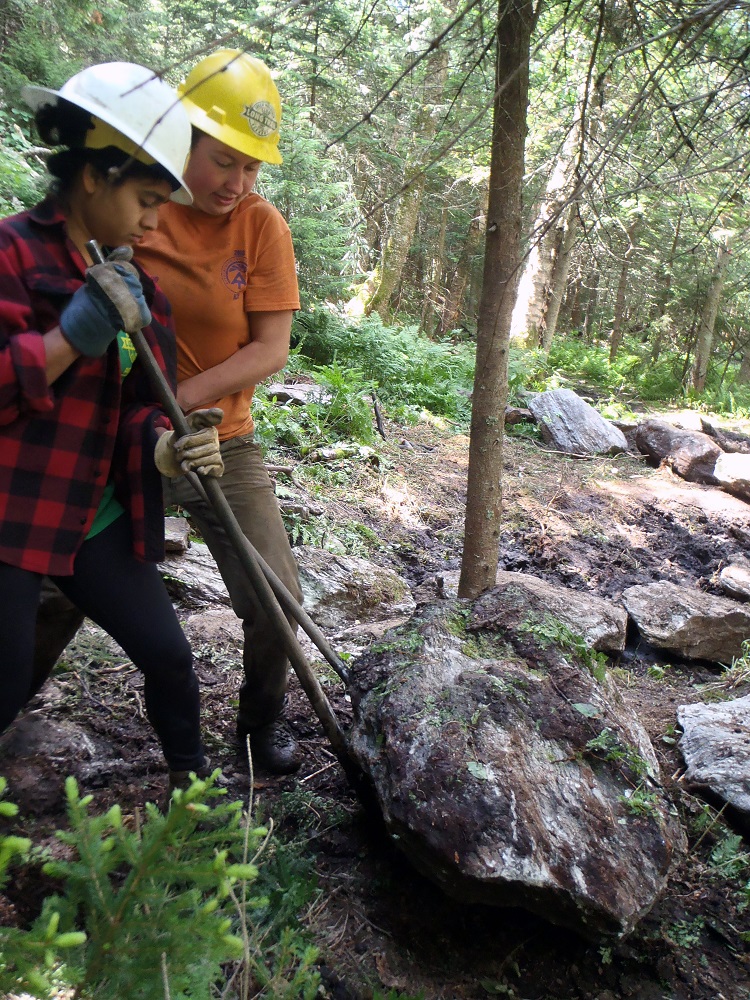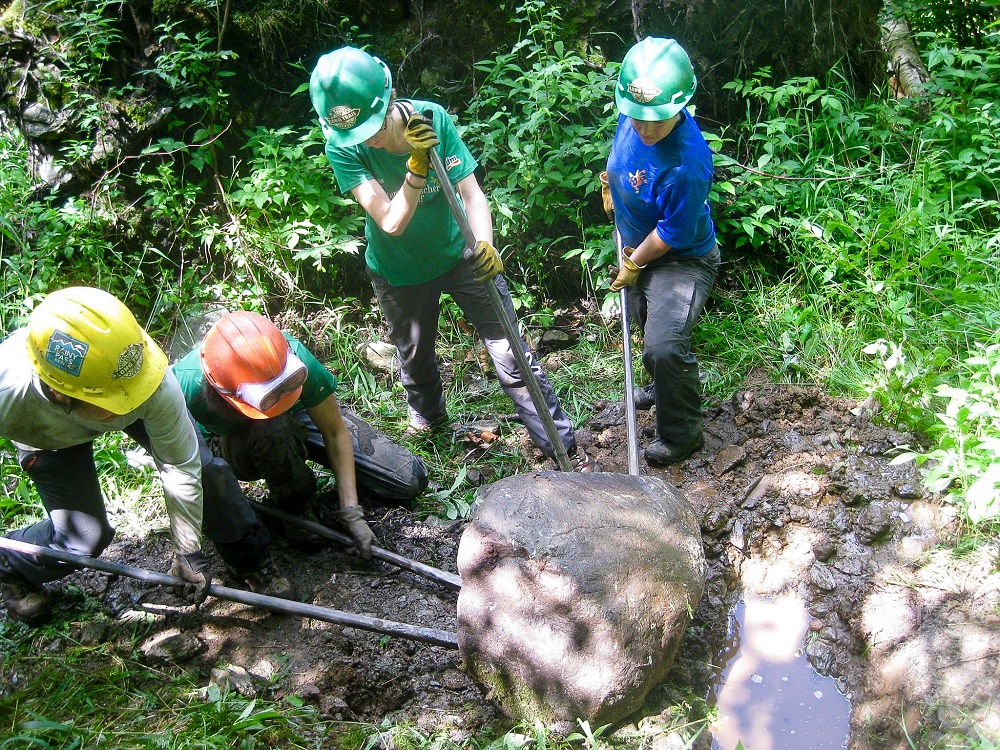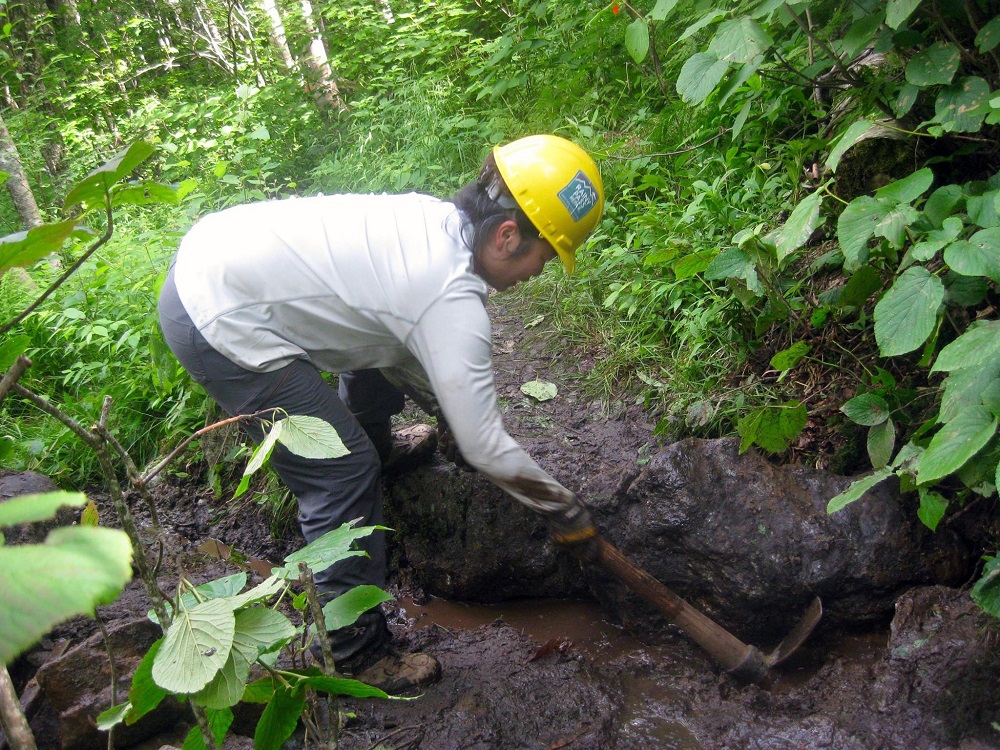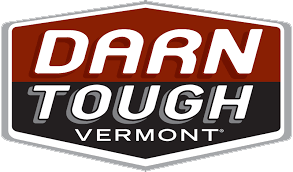This article was written by Rosalie Sharp, 2019 Long Trail Patrol Leader, and previously appeared in the Fall 2019 Long Trail News.

Family and friends typically struggle to understand what I mean when I say I lead trail crews. I’ve found the quickest way to create an image is to tell them something like “My crew and I find boulders in the woods, move them onto the trail, and set them in the ground to make structures that prevent erosion.”
That’s a simplification for sure, since we do more than stonework, but it fairly represents most Long Trail Patrol projects. Vermont trails are often steep, rocky, muddy, or some combination thereof. Stone structures are usually the best way to concentrate hiking traffic on a durable and well-drained surface. And ‘boulders’ is no understatement—the rocks we use are truly massive.
How can a crew of four move such big rocks? With the right tools! Generations of trail builders have moved boulders with hand tools since Long Trail construction began. The Long Trail Patrol continues to use rock bars and pick mattocks almost daily. While rigging systems help bring rocks to the trail, the rock bar and the pick are the most essential tools. We could do any of this season’s stone projects with just them and a sledgehammer. They’re simple, but powerful.
Of course, they must be wielded effectively. A bar rightly placed can flip rocks no human could budge with muscle alone. Physical strength is an asset, but it’s not the most important one. Using tools wisely, we can lift heavier loads, with less strain. That’s essential for anyone hoping to do trail work for more than a couple years, and to avoid back problems before 30.
A rock bar is simply a lever. Placing the beveled end under a rock and prying up or down gives a worker substantial mechanical advantage. The closer the rock to the fulcrum, and the farther away we grip the bar, the less force we need to move the rock.

As a worker starts rolling a big rock, they can lift only so far before the bar must be repositioned for another lift. This requires teamwork: another crew member places a bar to hold or move the rock further while the first person repositions. They take turns until the rock flips, then repeat the process. When the rock nears its final location, workers must plan their movements to place the rock properly in the hole they’ve dug, all of which requires foresight, precision, and a good sense of how that rock will behave.
Which brings me to the pick mattock, which is a combination lever and digging tool. The mattock end can dig a rock out of the soil, moss, and leaves where it starts, and also dig the hole in the trail where it will finish. The pick end is the lever. However, because the handle is perpendicular to the pick, using a pick instead of a bar requires forces in different directions. Workers usually use a bar to move rocks up and away, but a pick works best to move rocks up and toward a worker. Predicting the forces to apply to our tools enables us to move rocks through the woods efficiently, accurately, and safely.

Building skill and confidence with these tools can be incredibly rewarding. Last summer I approached three Green Mountain Club volunteers struggling to lift a rock the size of a tractor tire from a deep, boggy section of soil. Their rock bars kept slipping through the mud, deer flies buzzed above, it was at least 80 degrees, and they were understandably tired and frustrated. “We’re not strong enough to move this rock,” they declared.
But they were strong enough. What they needed was strategy. We set smaller rocks for fulcrums so our bars wouldn’t slide through the mud; we planned where to place our bars; and we focused on communicating clearly. Within 20 minutes we had that rock flipped out of the hole, and they were rolling it down to the trail with renewed energy and confidence.
Those three volunteers were women. Unfortunately, their belief in weakness is common among women new to trail work. Women trail workers often, though not always, have less upper body strength than many men, so they tend to feel less capable. That’s how I was at first, but I’ve been fortunate to work with extraordinary women who showed me that small size and limited strength need not be a disadvantage. I’ve never been very good at moving rocks by hand, but that pushed me to learn how to choose and use the right tools. I’m much stronger now than when I began rock work, and choose using tools over my hands most of the time. I’m a faster, safer, and healthier trail worker because of it.
Nearly every stone structure on the Long Trail was built with rock bars and pick mattocks, and many have lasted decades. The tools are timeless, simple, and essential to working on Vermont trails. Long Trail Patrol crews will be using them all over the Green Mountains this season. Come, find us, and see some rock moving in action!



















Thank you for tour work! It is truly remarkable and in my opinion it is art!
Thank you for this encouraging post. of techniques are hard to come by any video would be an incredible resource to the world. Thanks for sharing your experience in text too!